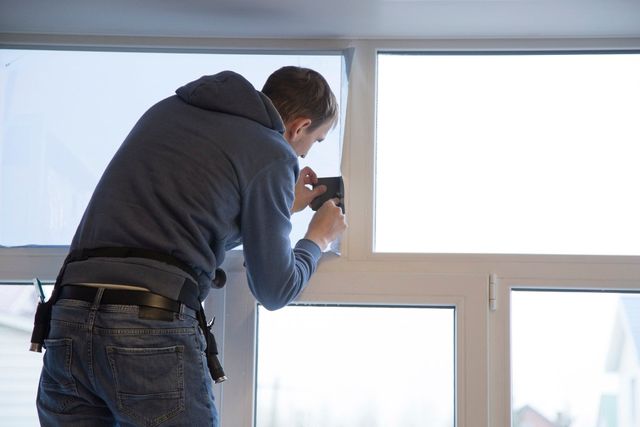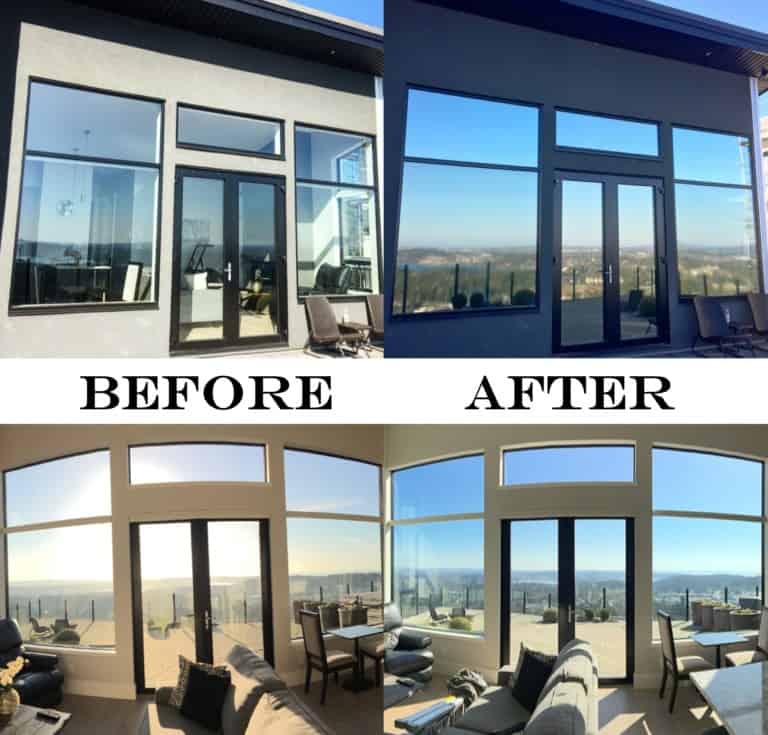How Residential Window Tint Boosts Your Home's Aesthetic Charm
How Residential Window Tint Boosts Your Home's Aesthetic Charm
Blog Article
How Residential Home Window Tinting Enhances Your Home's Energy Effectiveness
Residential window tinting provides an engaging remedy for home owners looking for to enhance power efficiency within their space. By using specialized films to windows, it efficiently decreases heat transfer, therefore stabilizing indoor temperatures and minimizing the requirement for excessive heating or air conditioning. This not only cuts energy usage yet also offers an extra comfortable atmosphere by minimizing glare. Nevertheless, understanding the subtleties of just how tinting works and choosing the ideal kind for your home can be essential. Curiously, what elements should one take into consideration prior to making this financial investment?
Understanding Window Tinting
Understanding window tinting is necessary for homeowners looking for to boost both convenience and power performance in their space. Residential Window Tint. Window tinting includes the application of a thin film to the interior or outside surface area of glass windows. This film can substantially regulate the amount of sunlight and heat that enters a home, thus influencing interior environment problems
There are different sorts of window tinting films available, each with distinctive homes. Dyed movies take in solar energy, while reflective films disperse it away from the glass surface. Ceramic films use an equilibrium of exposure and heat rejection, making them a preferred option amongst home owners. The efficiency of window tinting is frequently gauged by its Visible Light Transmission (VLT) portion, which shows just how much light can travel through the film.
Benefits of Energy Effectiveness
Window tinting not just enhances looks but also plays a substantial role in improving energy performance within property spaces. By minimizing heat transfer with windows, colored films produce an extra secure indoor climate, which can bring about considerable decreases in energy intake for heating & cooling. This power effectiveness converts right into lower energy costs, offering home owners with substantial long-lasting financial savings.

Furthermore, home window tinting enhances the convenience of living areas. By reducing glow and blocking hazardous UV rays, colored windows create an even more enjoyable atmosphere, which can result in improved wellness for residents. The defense against UV rays additionally helps maintain furniture and floor covering from fading, adding to the durability of home things.
Exactly How Tinting Works
Tinting films run with a combination of sophisticated materials and modern technologies developed to regulate the quantity of solar power entering a home. Mainly made up of polyester, these films often include ceramic or metal bits that take in and reflect warmth. This twin capacity enables them to significantly decrease the penetration of ultraviolet (UV) rays and infrared radiation while permitting noticeable light to pass through.
The efficiency of home window tinting is measured by its solar warmth gain coefficient (SHGC), which indicates exactly how much solar power is transmitted with the window. Reduced SHGC worths are more suitable as they signify better heat rejection. Furthermore, home window tints can include a selection of tones, allowing home owners to customize their aesthetic preferences while improving power performance.
Moreover, these movies serve as an obstacle, protecting against warmth loss throughout colder months by showing indoor heat back right into the living area. This thermal insulation impact enhances the air conditioning advantages gained throughout warmer months, contributing to a balanced indoor climate year-round. By managing solar power efficiently, residential home window tinting not just boosts convenience yet additionally plays a vital role in reducing energy intake and decreasing energy expenses.
Selecting the Right Tint

There are different sorts of window movies readily available, including colored, metalized, and ceramic. Colored films are cost-efficient but might have restricted sturdiness. Metalized movies offer much better warmth rejection yet can conflict with digital signals. Ceramic movies provide exceptional warmth control without endangering exposure and are extremely sturdy, making them a popular option.
Visible light transmission (VLT) is one more critical factor, as it indicates the amount of natural light that can go through the colored glass. House owners need to pick a color with a VLT that enhances their illumination choices while still giving ample glow decrease.
Furthermore, evaluating the solar warmth gain coefficient (SHGC) can assist figure out how well a tint can obstruct heat from sunshine. A lower SHGC shows much better warmth control, inevitably improving power effectiveness.
Installation and Upkeep Tips
Correct installment and upkeep are crucial components in taking full advantage of the benefits of property window tinting. To achieve ideal results, it is advisable to work with a qualified professional for setup. This guarantees that the tint is used correctly, staying clear of air bubbles, wrinkles, or imbalance that could endanger performance. Specialists likewise make use of specialized tools and strategies, which can improve the durability and performance of the tint.
Following setup, upkeep is important to prolong the life of the home window movie. It is recommended to wait at the very least thirty days before cleaning up the tinted windows to enable the glue to heal fully. When cleaning, utilize a soft towel and a mild, ammonia-free cleaner to avoid damaging the film. Prevent unpleasant products that can scratch the surface.
Dealing with these issues promptly can prevent more damages and preserve energy performance. By sticking to these installation and upkeep pointers, home owners can guarantee their window tinting proceeds to supply significant energy financial savings and convenience for years to come.
Final Thought
Finally, household home window tinting offers as a reliable option for enhancing power effectiveness within homes. By reducing warmth transfer and blocking harmful UV rays, home window films add to reduce power usage and boosted indoor convenience. The choice of ideal tinting products, along with appropriate address setup and upkeep, additionally optimizes these benefits. Eventually, window tinting represents a sustainable financial investment that not just lowers utility expenses yet likewise advertises a comfy living environment throughout the year.
Home window tinting entails the application of a thin film to the inside or outside surface area of read the article glass windows. By minimizing warmth transfer with home windows, colored movies create a more steady interior climate, which can lead to significant reductions in power intake for home heating and air conditioning.The performance of window tinting is measured by its solar warm gain coefficient (SHGC), which suggests exactly how much solar power is transferred via the home window. By taking care of solar power effectively, domestic window tinting not just enhances comfort however likewise plays a crucial duty in lowering power intake and decreasing energy costs.
By minimizing warmth transfer and obstructing harmful UV rays, home window films contribute to lower energy consumption and next improved indoor convenience.
Report this page